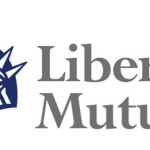If you have construction clients, you may know there are several relatively new policy form options available. These options have increased in recent times, including the introduction of limited reporting periods, or “sunset clauses” and “first manifestation provisions.” These options significantly modify or deviate from the most recent ISO Commercial General Liability (“CGL”) policy form, CG 00 01 12/04. Understanding the options is important for many reasons, including to properly advise your clients, train your staff, and avoid potential errors and omissions claims.
Sunset clauses
The concept of shortening the reporting period for claims is not new, and is relatively self-explanatory. An insured has a limited period in which to report a claim potentially covered under his or her liability policy. Any claim reported after a certain period of time may not be covered. The amount of time a claim may be reported differs between policies and carriers. The operative language is typically attached to a policy as an endorsement.
But, what is relatively new in California is the promulgation of new “statutes of repose” related to residential construction defects. These relatively new statutes, that took effect Jan. 1, 2003, provide the time in which a general contractor or subcontractor may be held liable for certain construction defect claims. Construction defects are often hidden, and claims are likely to be brought some time after completion of the project. Therefore, they are affected by limited reporting periods or “sunset clauses.”
The statutes of repose are essentially based on the type of defect. The following is a summary of such statutes found in California Civil Code section 896:
1. Plumbing and sewer issues 4 years
2. Electrical system issues 4 years
3. Driveways, sidewalks, pathways, etc., cracks 4 years
4. Irrigation and drainage issues 1 year
5. Untreated wood post deterioration 2 years
6. Untreated steel fence deterioration 4 years
7. Paint and stain deterioration 5 years
8. Landscaping systems 2 years
9. Dryer ducts 2 years
Depending on the type of work performed by your construction client, a policy with a shortened reporting period may cover the time in which he or she may be held liable for certain construction defects claims. For example, a contractor may not be liable for a landscaping system claim beyond two years from the close of escrow. Therefore, a policy with a three-year “sunset clause” would potentially cover landscaping system claims.
Manifestation provisions
The “first manifestation” provision may significantly modify or deviate from the most recent ISO Commercial General Liability policy form, CG 00 01 12/04, commonly referred to as an “occurrence” form. The principle difference between the ISO “occurrence” form and a manifestation form is what California courts refer to as the “trigger of coverage.” The trigger of coverage is the event or circumstances that activate the insurer’s defense and indemnity obligations under the policy.
According to an ISO General Liability Rules and Forms Committee, the standard ISO form is intended to provide coverage for injury that occurs during the policy period, regardless of when the injury becomes known or manifest. Therefore, “occurrence” policies may cover injuries that occur during the policy period but are not discovered until years later (i.e., latent construction defects).
Although manifestation forms differ between insurers, discovery of the injury or damage is intended be the trigger of coverage. Most forms require the injury or damage be known or discovered during the policy term. According to Montrose Chem. Corp. v. Admiral Ins. Co., a “discovery” trigger of coverage effectively transforms an occurrence form into a claims made policy, without the requirement to report the claim within the policy period.
For illustration, a pool leak begins in year one, continues during year two, and is discovered during year one. Based on the discussion in Montrose, both an occurrence and manifestation policy effective during year one would provide coverage for year one because the damage occurred and was discovered during the policy term. An “occurrence” policy effective during year two may also cover the damages during year two. A manifestation policy would not, because the damage was not discovered during the policy term.
Some insurers have adopted the manifestation form, or discovery trigger, for two primary reasons. One is to limit their exposure to a single policy period, because injury or damage can manifest at only one point in time. Second, insurers sought to reduce their exposure to an unpredictable and lengthy “tail” of lawsuits filed years after the risk they agreed to protect against.
Jeffrey M. Hohlbein is vice president of business development and general counsel for Builders & Tradesmen’s Insurance Services. E-mail: jhohlbein@btisinc.com.
Topics California Construction
Was this article valuable?
Here are more articles you may enjoy.


 Berkshire’s Jain on Cyber: ‘The Mindset Should Be You’re Not Making Money’
Berkshire’s Jain on Cyber: ‘The Mindset Should Be You’re Not Making Money’  Liberty Mutual Posts $1.5B Net Income for Q1, Reversing Loss
Liberty Mutual Posts $1.5B Net Income for Q1, Reversing Loss  Everton FC Buyer Accused of Fraud, Double-Pledging Assets in Lawsuit
Everton FC Buyer Accused of Fraud, Double-Pledging Assets in Lawsuit  Pfizer Agrees to Settle More Than 10,000 Zantac Cancer Lawsuits
Pfizer Agrees to Settle More Than 10,000 Zantac Cancer Lawsuits 


